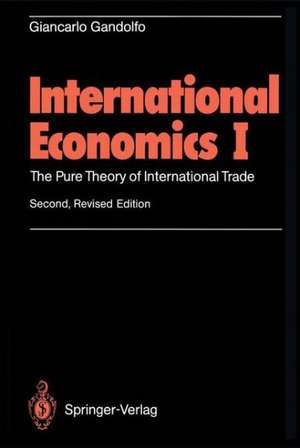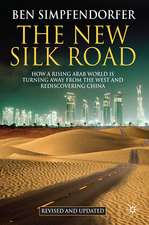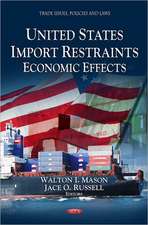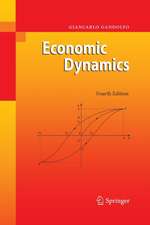International Economics I: The Pure Theory of International Trade
Autor Giancarlo Gandolfoen Limba Engleză Paperback – 31 aug 1994
Preț: 392.60 lei
Nou
Puncte Express: 589
Preț estimativ în valută:
75.13€ • 80.33$ • 62.64£
75.13€ • 80.33$ • 62.64£
Carte tipărită la comandă
Livrare economică 18 aprilie-02 mai
Preluare comenzi: 021 569.72.76
Specificații
ISBN-13: 9783540581338
ISBN-10: 3540581332
Pagini: 372
Ilustrații: XXIV, 344 p.
Dimensiuni: 170 x 242 x 20 mm
Greutate: 0.52 kg
Ediția:2nd, rev. ed. 1994
Editura: Springer Berlin, Heidelberg
Colecția Springer
Locul publicării:Berlin, Heidelberg, Germany
ISBN-10: 3540581332
Pagini: 372
Ilustrații: XXIV, 344 p.
Dimensiuni: 170 x 242 x 20 mm
Greutate: 0.52 kg
Ediția:2nd, rev. ed. 1994
Editura: Springer Berlin, Heidelberg
Colecția Springer
Locul publicării:Berlin, Heidelberg, Germany
Public țintă
GraduateCuprins
1 Introduction.- 1.1 International Economics as a distinct subject.- 1.2 The pure theory of international trade: an overview.- References.- 2 The classical (Ricardo-Torrens) theory of comparative costs.- 2.1 Comparative costs (advantages) and international trade.- 2.2 Alternative graphic representations.- 2.3 A modern interpretation in terms of optimization.- 2.4 Generalizations.- 2.5 The problem of the determination of the terms of trade.- References.- 3 The neoclassical theory of international trade.- 3.1 The transformation curve and the box diagram.- 3.2 General equilibrium in a simple closed economy.- 3.3 General equilibrium in open economies and international trade.- 3.4 Marshallian reciprocal demand curves, international equilibrium, and stability.- 3.5 Increasing returns to scale.- 3.6 The gains from trade.- 3.7 Generalizations.- References.- 4 The Heckscher-Ohlin model.- 4.1 Basic assumptions and their meaning.- 4.2 Proof of the fundamental theorem.- 4.3 Factor price equalization.- 4.4 Extensions and qualifications.- 4.5 Leontief’s paradox and other empirical studies.- References.- 5 Tariffs, protection, economic integration.- 5.1 Introduction.- 5.2 Partial equilibrium effects of a tariff.- 5.3 The so-called social costs of a tariff.- 5.4 General equilibrium effects of a tariff.- 5.5 Quotas and other non-tariff barriers.- 5.6 Free trade versus protection and the theory of second best.- 5.7 Intermediate goods and the effective rate of protection.- 5.8 Customs unions and economic integration.- 5.9. The “new” protectionism.- References.- 6 International trade and economic growth.- 6.1 Introduction.- 6.2 The effects of growth on the volume of trade.- 6.3 Growth and terms of trade; immiserizing growth.- 6.4 Increase in factor endowments and international trade:Rybczynski’s theorem.- 6.5 Technical progress and international trade.- 6.6 Dynamic models.- References.- 7 Some refinements of the orthodox theory.- 7.1 Introduction.- 7.2 Transport costs and international trade.- 7.3 Intermediate goods.- 7.4 Elastic factor supply.- 7.5 Non-traded goods.- 7.6 Natural resources, specific productive factors, “Dutch disease” and de-industrialization.- 7.7 International factor mobility.- 7.8 International trade under uncertainty.- 7.9 Illegal transactions in international trade and the economic theory of smuggling.- References.- 8 The New Theories of International Trade.- 8.1 Introduction.- 8.2 The precursors.- 8.3 Neo-Heckscher-Ohlin theories.- 8.4 Monopolistic competition and international trade.- 8.5 Oligopoly and international trade.- References.- 9 Neo-Ricardian theories of international trade.- 9.1 Intermediate and capital goods in the orthodox theory.- 9.2 The debate between the orthodox theory and the neo-Ricardian theories.- References.- Name Index.















